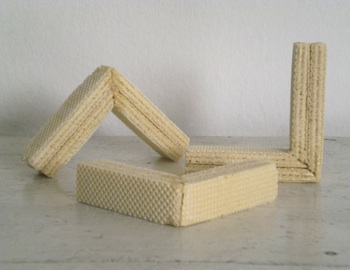In short, relational aesthetics sparked my curiosity. Relational Aesthetics by Nicolas Bourriaud examines artistic projects that seek to engage the public audience by requiring some sort of interaction or reaction in the public sphere. The notion of using art to create social interactions was fascinating to me, and seemed much like a psychological experiment.
So I looked more into artists who helped to revolutionize the movement of relational aesthetics in the 1990s. From placing candy in piles on a museum floor to paying heroine addicts to get high in a formal setting, these artists did it all. And for what? To simply create a social interaction among people. But this idea is profound. In a world of lessening personal social interaction due to exactly what should enhance it-social media- I believe exhibits like this serve the important purpose of re-centering focus on the shared human experience.
Gabriel Orozco was mentioned in Bourriaud’s essay, a man who helped to pioneer relational aesthetics. One of Orozco’s first endeavors into relational aesthetics was his exhibition entitled La D.S. In this worked, Orozco sliced a silver Citroen DS into three pieces lengthwise, and the middle section was removed. It formed an arrow-like car that visitors were allowed to sit in, open the doors, touch, etc. The car was not made to be driven, but rather to be a force of social response. In such a formal setting, it seems unusual that visitors would be allowed to touch the car and mess up “sacred” art.
Thus, the idea of relational aesthetics not only provides a vehicle (pun) for social interaction, but also challenges society to rethink about their notions of art. This can be very hard to do, as a white-walled gallery often dominates the minds of many people when they think about art. Relational aesthetics throws this idea away and invites the visitor to come touch, see, feel, participate.




